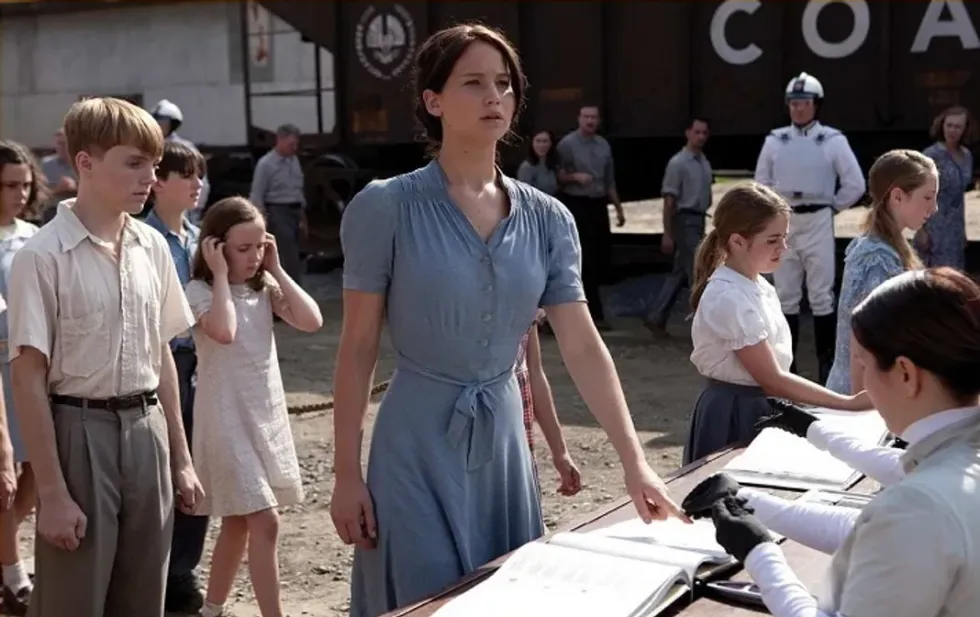What Is Seven-Act Structure and How Do You Use It?
Got a longer story to tell? Maybe a few additional acts will help keep the audience engaged.

The Lord of the Rings: The Fellowship of the Ring
I'm always looking for new ways to think about plot and structure in screenwriting. One of the ways I've been playing with it recently is using seven acts instead of a three-act structure.
I had never heard of this before, but since I learned the elements of the idea, I really have grown to love plotting this way. Seven-act structure is a versatile tool applicable across various media, and its influence is notably visible in modern film and television, if you know how to look for it.
Let's dive in together.
What Is Seven Act Structure?
The seven-act structure in screenwriting is a narrative framework that divides a screenplay into seven distinct sections or acts.
Each act serves a specific purpose in the story's development, allowing for detailed character arcs, nuanced plot progression, and effective pacing.
This structure is particularly useful for crafting complex, layered narratives in film and television, providing a comprehensive blueprint for screenwriters to develop their stories cohesively and engagingly.
The seven-act structure enhances the storytelling by offering a more granular approach than traditional three-act structures, making it well-suited for contemporary screenwriting where depth and complexity are often key.
How Do You Use Seven-Act Structure?
This seven-beat structure is akin to the three-act structure but provides a more granular breakdown of the story's development. It's particularly useful for writers who want to organize their thoughts and ensure their story has a strong, cohesive progression.
Here's an overview of the Seven Act Structure:
- The Hook: Introduces the protagonist and their world, aiming to engage the reader's interest and establish the setting and initial conditions of the story.
- Plot Point 1: Presents an inciting incident that disrupts the protagonist's normal life and launches them into the main narrative.
- Pinch Point 1: Introduces a significant challenge or antagonist, escalating the story's conflict and deepening the protagonist's involvement in the narrative.
- Midpoint: Marks a turning point where the protagonist shifts from a reactive to a proactive role in the story. This often involves a significant revelation or event that changes the protagonist's understanding or approach to their situation.
- Pinch Point 2: Represents a moment of significant adversity or challenge, often leading the protagonist to hit rock bottom. This part of the story tests the protagonist's resolve and often leads to significant character development.
- Plot Point 2: The protagonist discovers something crucial that enables them to address the central conflict or challenge of the story, setting the stage for the final resolution.
- Resolution: Concludes the story by resolving the central conflict and addressing the primary narrative threads. The protagonist may or may not achieve their initial goal, but the story's primary issues are typically resolved by this point.
A Seven-Act Structure Example

The Hunger Games
Credit: LionsgateAn excellent way to understand this structure is by analyzing its application in popular stories. For example, The Hunger Games can be broken down using the seven-act structure:
- Hook: Katniss, a resourceful teenager, struggles to provide for her family in a dystopian society.
- Plot Turn 1: Katniss volunteers for the Hunger Games to save her sister, thereby leaving her ordinary world.
- Pinch Point 1: Before the Games begin, Katniss meets other contestants and the showrunners, which raises the stakes.
- Midpoint: During the Games, Rue is killed, prompting her to stop following the rules laid out by the antagonists.
- Pinch Point 2: Katniss hits rock bottom when she realizes that the Capitol has tricked her, making her situation seem hopeless.
- Plot Turn 2: Katniss devises a plan to outsmart the Gamemakers, pretending to fall for Peeta, asserting her agency and moving toward resolving the conflict.
- Resolution: The showrunners concede to Katniss's defiance, and she emerges victorious, they let her and Peeta live, and she returns home to a better life for her family.
By following this structure, writers can create a narrative that has a clear direction and satisfying arc, ensuring that each part of the story contributes meaningfully to the overall plot.
What Are Some Advantages of Using Seven-Act Structure?
 'Spider-Man: Across the Spider-Verse'
'Spider-Man: Across the Spider-Verse'Sony
The seven-act structure offers several advantages for writers and storytellers:
- Detailed Story Development: It allows for a more nuanced and detailed development of the plot and characters compared to traditional three-act structures.
- Enhanced Character Arcs: This structure provides ample opportunities to explore and develop characters, making their transformations and growth more gradual and believable.
- Improved Pacing: The seven distinct acts help in pacing the story effectively, avoiding rushed conclusions or overly drawn-out narratives.
- Increased Flexibility: It offers flexibility to explore subplots and multiple storylines without losing focus on the main narrative.
- Greater Emotional Impact: By breaking the story into more segments, it creates more opportunities for emotional engagement and tension building.
- Versatility Across Genres: It can be adapted to various genres and formats, from novels and screenplays to episodic TV series, making it a versatile tool for different types of storytelling.
The seven-act structure offers adaptability across different genres and media, as demonstrated in modern film and television, highlighting its versatility and effectiveness.
Whether you're a seasoned writer or a novice exploring the realms of storytelling, understanding and utilizing seven-act structure can significantly elevate the quality and impact of your narratives.
Now, go get writing.
- What Is Three Act Structure in Film and TV? ›
- 5 Pieces of Terrible Writing Advice You Should Totally Ignore ›
- Watch: What 'Seven Samurai' Teaches Screenwriters About Story and Structure ›











